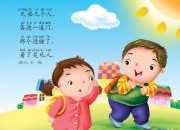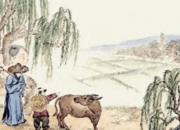福建省届高三毕业班质量检查测试英语试卷
时间:2021-08-31福建省2019届高三毕业班质量检查测试英语试卷
一、阅读理解
My neighbor Orlando is a paramedic (急救医士). He and his wife are some of the nicest people I have ever met. A few years back we started this sort of “favor war”, where one of us would do something for the other, such as shoveling (铲) their driveway or helping them build a shed, and next time the other would try to top it with another favor.
Yesterday morning there was maybe 2 or 3 feet of snow on the ground and I remembered he shoveled my driveway for me last snowfall. So I took out my shovel and took care of both our sidewalks and driveways because it was my turn to do a favor back. It took a while but I finished and got into my car for work. What I didn’t realize was that Orlando had to work that day too.
Fast forward to this morning I got a knock on my door. It was him. He immediately shook my hand and informed me that because I shoveled his driveway and sidewalk for him, he was able to get to work earlier. As soon as he started his shift, a call came through that a young boy was in a medical emergency. Luckily he and his partner were only about 2 minutes away, but the next closest ambulance was in 10 minutes. This kid did not have 10 minutes. He barely had 2 minutes. Because my neighbor got to work sooner, the young boy got to live his life.
This isn’t a humble brag (吹牛). This is to inform others that even the smallest favors can have the biggest impacts. It wasn’t too much of trouble to shovel his driveway for him, but because I did, the young kid got to see his family again, go back to school again, talk to his friends again and live his life.
1.What can we know about the writer and Orlando
A. They once had a conflict.
B. They signed a favorable agreement.
C. They favor shoveling snow together.
D. They are always ready to help each other.
2.Who saved the boy before it was too late
A. The writer.B. The boy’s parents.
C. Orlando and his wife.D. Orlando and his partner.
3.What does the writer intend to tell us
A. Never ask for trouble.B. No favor is too small.
C. One cannot always be lucky.D. Don’t lose heart in an emergency.
TRAIL SAFE! is a unique safety training program designed specifically for National Park Service (NPS) Trail Volunteers, but is useful to everyone! It’s based upon NPS Operational Leadership Training, where the human factor of safety is explored. TRAIL SAFE! captures (捕捉) the core learning objectives of the 16-hour Operational Leadership course while allowing volunteers to learn from their own homes online.
The TRAIL SAFE! series includes eight video lessons, each ranging in length from 18 to 40 minutes long. Watch them over the course of multiple days, or “binge watch” the entire series in three hours—it’s up to you—but please watch them in order from Lesson 1 through Lesson 8. After viewing the lessons, send your training verification (验证) emails to register your participation. When you have viewed and registered for all eight individual lessons, each participant will receive a TRAIL SAFE! pin and a SPE/GAR card in the mail for use in the field. Thank you for helping to make Sleeping Bear Dunes one of the safest work environments for NPS Trail Volunteers like yourself.
Ready to start
Click on this link to access all TRAIL SAFE! videos: https://www.nps.gov/iatr/trail-safe.htm
If you require Audio Descriptive versions of TRAIL SAFE!, the link to those videos is also available on the Ice Age Trail site.
Record your participation
In order to receive credits for your participation, please fill in your answers to the following questions and email to: Matthew_mohrman@nps.gov.
●Which video lesson did you just complete viewing
●Name of the Trail where you volunteer.
●Your name and full mailing address, so we may send your course completion materials to you.
●Names and addresses of others if you are viewing this lesson in a group setting.
●Optional: Please let us know any comments or suggestions you have about this lesson.
Upon registering your completion for the entire eight lesson series, you’ll receive your TRAIL SAFE! pin and risk assessment card via mail.
1.What is the aim of TRAIL SAFE!
A. To develop volunteers’ operational leadership.
B. To offer links to the websites for learning.
C. To provide credits for viewing.
D. To pass the risk assessment.
2.How long does it take the participants to watch the eight videos at a time
A. 18 minutes.B. 40 minutes.
C. 3 hours.D. 16 hours.
3.What should the participants do to get a SPE/GAR card
A. Watch and register for all the series.
B. Give some comments on the lessons.
C. Send and receive training mails.
D. Answer all of the questions.
4.What can be inferred about the job of NPS Trail Volunteers
A. It is popular with everyone.B. It can be dangerous.
C. It shall be completed online.D. It needs NPS working experience.
AUSTRALIAN adults want to see “life skills” introduced into school curriculums, including money management, job preparation and domestic tasks. New research from Monash University showed Aussie adults also widely supported the inclusion of technology, coding and artificial intelligence subjects to student curriculums to prepare them for future jobs.
Co-author Professor Neil Selwyn, from Monash’s new Education Futures think tank, said the survey results of more than 2,000 Australians had taken himself and Dr Deana Leahy by surprise. “The life skills—I wasn’t expecting that at all,” he said. Those quizzed were asked to rate the value of a list of subjects already in the curriculum, but were also given an open space to write what they think should be included. Prof. Selwyn said people called for schools to teach financial skills, budgeting, cooking and doing taxes. “You could argue that these are things people should be learning themselves, or learning from their families,” Prof. Selwyn said. “But we’ve got to be thinking forward in terms of the skills people will need for jobs and their ways of living.”
One respondent said schools should introduce a “contemporary life skills” subject: “A compulsory 1-hour a week class on skills needed that parents seem continually unable to teach their kids.” Suggestions for the class included resume writing, filing tax returns and health claims. Another respondent called for students to be taught “general life skills as unfortunately not enough kids will have parents to actually be bothered to educate them or simply parents don’t know themselves”.
Of the subjects, maths was the highest ranked (75.5 percent), followed closely by English (74.8 percent). And while science was the third highest ranked subject (46.2 percent), it was more strongly supported by those who earned higher wages and were university educated compared to lower income earners.
Aspects of school life considered least important were students having fun, learning about things that interested them and being given the opportunity to be creative.
1.Why did the adults suggest adding “life skills” to school curriculums
A. To vary school curriculums.
B. To enrich students’ school life.
C. To prepare students for future work and life.
D. To save parents the trouble of educating kids.
2.What did Prof. Selwyn think of the adults’ suggestions
A. Reasonable.B. Ridiculous.
C. Interesting.D. Impractical.
3.What does Paragraph 3 focus on
A. Differences of school subjects.B. Reasons for the school survey.
C. Opinions from the surveyed.D. Investigations of the respondents.
4.What can we know from the text
A. The present curriculums are to adults’ taste.
B. Contemporary life skills involve resume writing.
C. Students’ interests have been greatly promoted.
D. The parents quizzed think highly of school life
If maths is the language of the universe, bees may have just uttered their first words. New research suggests these busybodies of the insect world are capable of addition and subtraction (减法)—using colors in the place of plus and minus symbols.
In the animal kingdom, the ability to count—or at least distinguish between differing quantities—isn’t unusual: It has been seen in frogs, spiders, and even fish. But solving equations (方程式) using symbols is rare, so far only achieved by famously brainy animals such as chimpanzees and African grey parrots.
Building on previous research that says the social insects can count to four and understand the concept of zero, researchers wanted to test the limits of what their tiny brains can do.
Scientists trained 14 bees to link the colors blue and yellow to addition and subtraction, respectively. They placed the bees at the entrance of a Y-shaped maze (迷宫), where they were shown several shapes in either yellow or blue. If the shapes were blue, bees got a reward if they went to the end of the maze with one more blue shape (the other end had one less blue shape); if the shapes were yellow, they got a reward if they went to the end of the maze with one less yellow shape.
The testing worked the same way: Bees that “subtracted” one shape when they saw yellow, or “added” one shape when they saw blue were considered to have aced the test. The bees got the right answer 63% to 72% of the time, depending on the type of equation and the direction of the right answer—much better than random guesses would allow—the researchers report today in Science Advances.
Though the results came from just 14 bees, researchers say the advance is exciting. If a brain about 20,000 times smaller than ours can perform maths using symbols, it could pave the way to novel approaches in artificial intelligence (AI) and machine learning. Just don’t ask the bees to do your homework anytime soon.
1.Why do the scientists conduct the research
A. To teach them maths.B. To test the power of tiny brains.
C. To explain the meaning of colors.D. To get access to machine learning.
2.What does the underlined word “aced” in Paragraph 5 probably mean
A. Given up.B. Entered for.
C. Got through.D. Checked over.
3.What might the research make contributions to
A. Language acquisition.B. Arithmetic learning.
C. Protection of animals.D. Development of AI.
4.What can be the best title for the text
A. Bees “Like” Counting
B. Bees “Tell” Colors Apart
C. Bees “Perform” Maths Using Shapes
D. Bees “Get” Addition and Subtraction











